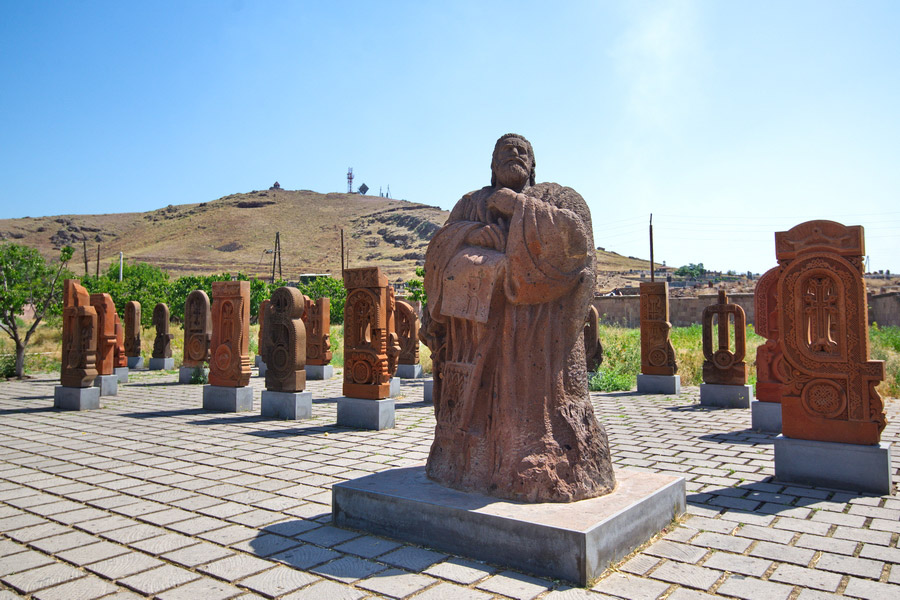UNESCO List of Intangible Cultural Heritage in Armenia

Armenia boasts a wealth of historical monuments, including numerous ancient churches. Several of these, such as the Sanahin, Haghpat, and Geghard monasteries, as well as the Echmiadzin temples, have earned a spot on the World Heritage List. Delve deeper into Armenia's Intangible Cultural Heritage, which showcases the nation's rich, longstanding history.
UNESCO Intangible Cultural Heritage in Armenia
Armenia has eight entries on the List of Intangible Cultural Heritage of Humanity:
- The duduk and its music (added in 2008);
- The Armenian Art of Khachkars: Symbolism and Craftsmanship (added in 2010);
- A performance of the Armenian epic "David of Sassoun" (added in 2012);
- Lavash - the making and importance of traditional bread as a representation of Armenian culture (added in 2014);
- Kochari Traditional Group Dance (added in 2017);
- Armenian script and its cultural expression (added to the UNESCO list in 2019);
- Pilgrimage to the Monastery of St. Thaddeus the Apostle (added in 2020);
- Tradition of blacksmithing in Gyumri (inscribed in 2023).
Duduk and Its Music
The duduk is a traditional Armenian wind instrument crafted from wood. Historians have verified that the duduk was played as far back as the first century BC. Its music can be heard at festivals and commemorative occasions, with the instrument's gentle timbre reflecting the rich history and culture of Armenia. Duduk players customarily perform in pairs, dressed in traditional Armenian attire. Alongside traditional music, the duduk is increasingly being used to perform soundtracks from well-known films.
The Armenian Art of Khachkars: Symbolism and Craftsmanship

Khachkars are intricate stone carvings of crosses on steles, often referred to as "living stones." These cross stones vary in size but seldom exceed 1.5 meters. The oldest khachkars discovered in Armenia date back to the 9th century, while the tradition of creating them originates from the 4th century.
Over 50,000 khachkars are found throughout Armenia, with many crafted before the 20th century. Interestingly, no two khachkars in the country are identical. The art and skill of khachkar-making are passed down from one generation to the next, with masters training their apprentices.
A Performance of the Armenian Epic "David of Sassoun"
This performance narrates the tale of a resilient young man who defends Armenia against evil forces. Based on a folk epic, the performance typically takes place on the first Saturday of October and during major holidays. The storyteller, who can be anyone—including women and children—accompanies themselves on the duduk, though sometimes a separate musician is invited. With 160 variations, the performance of "David of Sassoun" can last up to two hours, and serves as a repository of knowledge about Armenian religion, philosophy, customs, and traditions.
Lavash - The Preparation and Significance of Traditional Bread as an Expression of Armenian Culture

Lavash is a well-known thin Armenian bread that can be found at any Armenian celebration or purchased in stores. This type of bread is steeped in centuries-old traditions. For instance, during a wedding feast, lavash is draped over the bride and groom's shoulders. When properly baked, Armenian lavash can be stored for up to six months. Though women traditionally bake lavash, kneading and rolling the dough requires significant effort. The bread is baked in a clay oven on a special pad for 30 seconds.
Kochari - The Traditional Group Dance
The name "Kochari" translates to "brave man," and the dance is performed by men, women, and children alike. Kochari's movements mimic animals and depict shepherds' competitions. Accompanied by Armenian musical instruments, the dance is a staple at every Armenian holiday. It can also be seen on theater stages, as in the ballet "Spartacus," and has eight distinct variations.
The Armenian Script and Its Cultural Expression

The Armenian script has its roots in the alphabet developed by the renowned linguist and theologian Mesrop Mashtots in the early 5th century. The script's letters resemble people, animals, and birds, and each letter carries its own meaning. For instance, the letter "q" represents Jesus Christ, with its shape reminiscent of the crucifixion, a cross with Christ's head bowed. This suggests that the Armenian alphabet is more than just a script, but also a collection of coded symbols. Remarkably, the Armenian alphabet has undergone minimal changes since its creation.
Pilgrimage to the St. Thaddeus Apostle Monastery
This intangible heritage site is shared by Armenia and Iran. The monastery, dedicated to Thaddeus—one of the 12 apostles of Christ and regarded as the founder of the Armenian Apostolic Church—is situated in Iran. Tradition holds that the apostle is buried here. Each year in July, thousands of Armenian pilgrims, led by bishops and priests, gather in Iran to pay tribute to the saint. This near-twenty-century-old tradition was only interrupted when Armenia was part of the USSR.
Tradition of blacksmithing in Gyumri
Blacksmithing has been a part of Armenian culture for centuries. However, by the mid-20th century, this craft had almost vanished across the country. The only exception was in Gyumri, where traditional blacksmith shops have kept the art alive, passing down skills from one generation to the next. In Gyumri, local artisans continue to forge items like chandeliers, candlesticks, doors, gates, and window grates, all of which are essential to the city's architectural character. Remarkably, many of these blacksmiths in Gyumri represent the fifth or sixth generation in their family to practice this venerable craft.
In 2010, the Armenian government decided to create its own list of the country's intangible cultural heritage. Today, this list comprises more than 50 sites, such as traditional Armenian embroidery, the Mushurba water jug, the tradition of making and consuming Qiavar baklava, cheese-making customs, shadow puppet theater, and much more.
Visit Armenia to experience firsthand the intangible masterpieces recognized by UNESCO.
Learn more about the tangible UNESCO World Heritage Sites in Armenia.

